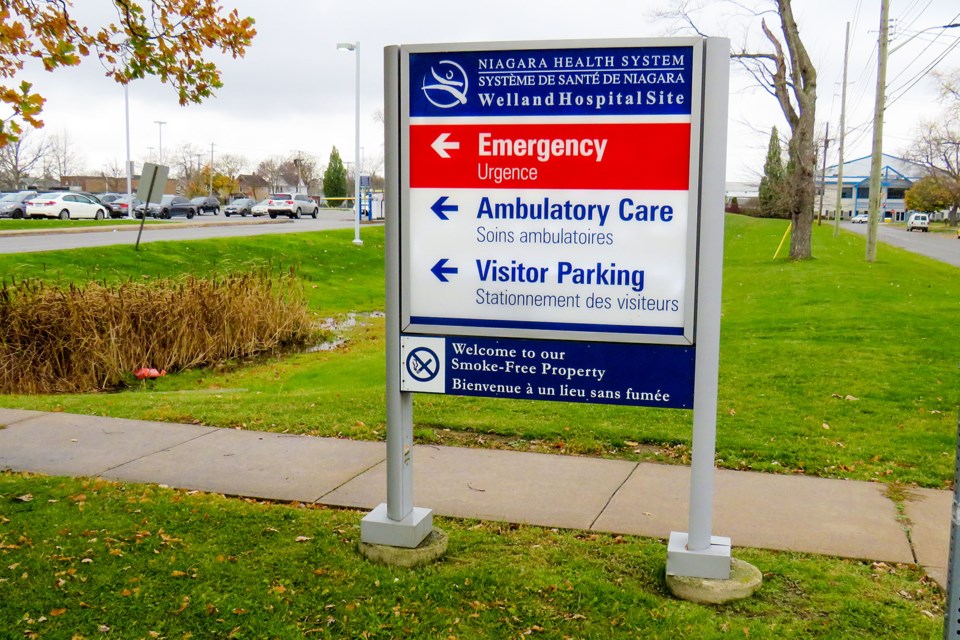Every couple years, my old timers hockey action is interrupted by injury. Strained back in 2019, torn rotator cuff in my shoulder in 2021. My number came up again last week. I lost my balance during a skirmish in front of the net with other 60-somethings, and my considerable bulk plummeted to the ice, compressing my ribcage in the process. I knew immediately that I should have followed my intuition, and made the previous shift my last of the morning.
Arriving home, I got little sympathy from my wife, who has been on my case to hang ‘em up. Put the skates away, and focus on other, less dangerous, age-appropriate stuff, she says. I told her that I have two carbon-fibre hockey sticks, and when they both break, I’ll pack it in. (Hopefully these two durable twigs will see me through to 2030.)
After a couple sleepless nights, I decided to plan a visit to the hospital emergency ward to ensure that a broken rib hadn’t impaled a kidney or speared my spleen. I wasn’t coughing up blood, but the discomfort of a rib injury can get pretty intense, and Tylenol just wasn’t cutting it.
I’m no stranger to pain, having had a couple knee surgeries back in my competitive years, and a few back issues from vicious cross-checks during decades in the lacrosse wars. I remember passing a kidney stone a couple decades ago. Now that was legit pain. My anguish was curtailed only by the anti-inflammatory Toradol intravenous drip provided by a benevolent doctor.
I’ve read that until you’ve experienced childbirth, you really don’t know pain. Fair enough. But given that prospect is not likely to occur any time soon, I’ll default to pain which I know, and which was my constant companion when I banged up my ribs.
I was reluctant to drive to the emergency unit and wait eight hours to be told to go home and gulp some acetaminophen. Frankly, there’s not much you can do with banged up ribs except wait for them to heal, and tolerate the discomfort, although everyday behaviours like coughing and sneezing ignite flashes of torment. In my experience, a few shots of Crown Royal helps.
Hospital wait times would test the patience of Job. In a recent media release, Niagara Health reported that its emergency departments are seeing nearly 150,000 patients a year, or more than 400 a day. So how do you figure out the best time to drop by, to minimize your hours waiting for treatment?
Real-time emergency department and urgent care centre wait times and other information about usage are now available on the Niagara Health System’s website. Four key pieces of information are available 24/7 to the public: wait times to see a physician or nurse practitioner, the number of people currently registered and waiting, the number of people currently being treated, and an estimate of the busiest times over the next six hours, based on the previous 30 days.

After consulting the website, I arrived at the Welland Hospital’s emergency ward at 3 AM, and found only two others waiting for treatment. After a brief meeting with the triage nurse and the lady at registration, I had a short wait before I saw a doctor, who promptly arranged a blood test and urinalysis, along with a rib x-ray. I was told my ribs were badly bruised, not broken, was given an injection of my beloved Toradol, and sent on my way about three hours after arrival.
The online link to the website is available at
https://www.niagarahealth.on.ca/site/waiting-times.
Another option to avoid the tedium of the waiting room is to access Niagara Health’s virtual urgent care online. Their website says that 90 percent of those meeting with a doctor or nurse practitioner via Zoom don’t have to go in-person to emergency. Same-day online appointments are available on a first-come, first-served basis, Monday to Friday from 9 AM to 4:30 PM. I have used this service, and can tell you that it is a timely and useful option for those with a broad range of medical maladies.
Remember that in-person emergency departments and urgent care centres do not see patients on a first-come, first-served basis. Canadian hospitals use the same triage scale to establish the level of care patients require, and prioritize the most urgent cases first.
Patients should always bring an up-to-date list of medications with them, have their health card ready, and let hospital staff know if their condition changes or they begin to feel worse.
Whenever possible your family doctor is your first point of access for care. Of course, if you are in severe distress, call 911 and do not drive yourself to the hospital. Call the paramedics instead.
Correction: An earlier version of this story erroneously stated that patients arriving by ambulance at a hospital were automatically put at the head of the queue. In fact, as the story mentioned, Canadian hospitals prioritize the most urgent cases first, no matter how patients arrive at the emergency room. Needlessly calling an ambulance for non-urgent matters reduces the EMS' ability to get to patients who are in true need of critical care.



